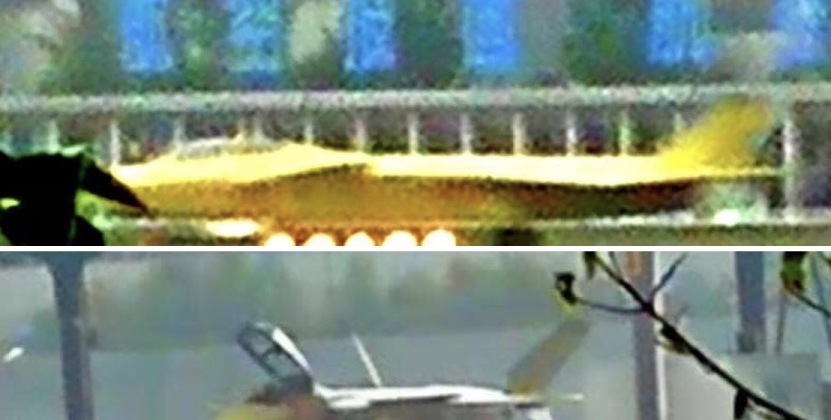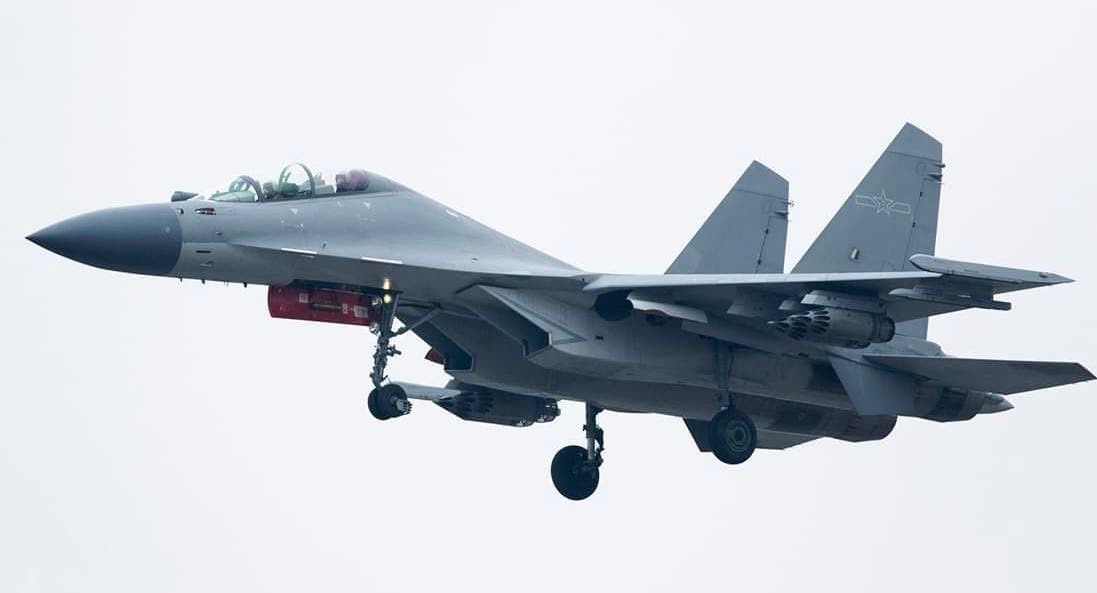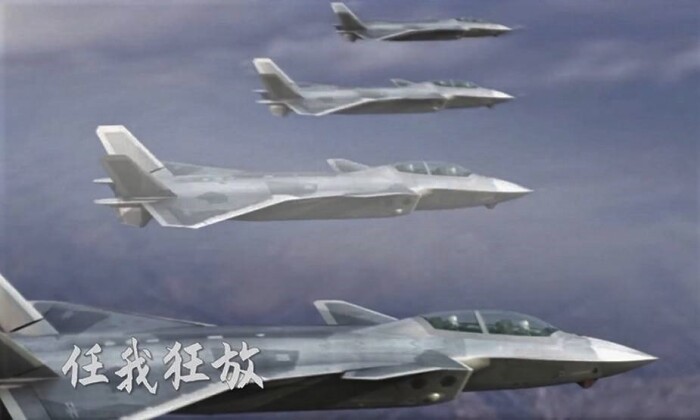China’s People’s Liberation Army (PLA) Air Force’s long speculated induction of a twin seat variant of its J-20 fighter jet has finally been confirmed by new leaked footage, with the prototype reportedly carrying out taxing tests and having yet to make its first flight. The J-20 entered service in 2017 as the first fifth generation fighter jet in the world developed outside the United States, and as a competitor to the U.S. Air Force’s F-22 Raptor air superiority fighter. Both were designed to maximise effectiveness in air to air combat with attributes including a high operational altitude, high speed, high manoeuvrability, long range, high weapons payload, a large sensor suite and a twin engine configuration. Like the F-22, the J-20 was designed with a radar evading stealth profile to improve its survivability by making it particularly difficult to lock on to for enemy radars.
While the F-22 was initially intended to be developed into a twin seat fighter, and eventually also a strike fighter as the FB-22, these programs were cancelled when production of the fighter was prematurely terminated in 2011 as a result of the fighter’s extremely high lifetime costs. Where the U.S. was unable to develop the Raptor further, China appears to have ambitious plans for the J-20 which will take the design well ahead of its rivals. According to recent reports from Chinese state media outlet CCTV, these include development into both strike and electronic attack jets for the PLA Air Force. Also planned is the integration of a range of new technologies from artificial intelligence to WS-15 next generation engines. An improved version of the single seat J-20, the J-20B, notably entered production in mid-2020 although the exact capabilities and features that will have remain unknown. The design has already improved considerably since entering service in 2017, with the most recent variants to enter service designated J-20A and using improved engines.

Chinese military aviation industries lead the world in their experience in modifying high performance airframes into specialised derivatives. Examples include the J-11B airframe, from which was derived the J-16 with next-generation features such as stealth coatings as well as the addition of a second seat. The J-16 in turn was developed into an electronic attack jet, the J-16D, which was unveiled in September 2020. J-16 pilots have attested to the important advantages that a twin seat configuration provides over single seat fighters from the same generation. The J-15 carrier based heavyweight fighter, also derived from the J-11B, has similarly been developed into an electronic attack aircraft, the J-15D, which also includes the addition of a second seat. The JH-7 strike fighter and H-6 bomber widely used by the PLA Navy have also been developed into electronic attack platforms – with the latter also developed into ballistic missile carrying strike bombers.

Considering the J-20’s advanced performance specifications and versatility it was long expected that the airframe would also be be adapted into new variants and derivatives to fulfil additional roles in much the same way as its fourth generation predecessors. The development of a twin seat variant is an important step in this direction, and without further modifications allows the aircraft to be used for training fifth generation fighter pilots in a way no other fifth generation aircraft in the world can. A twin seat configuration is vital for any strike or electronic attack aircraft, allowing it to carry a weapons systems officer responsible either for delivering complex electronic attacks or for designating ground targets and operating air to ground weaponry. This can be done simultaneously while the pilot in the first seat flies the aircraft and engages enemy aircraft with air to air munitions.
 The J-20’s development into a twin seat variant is highly symbolic of China’s rapid development to become a leading aerial power, one which is likely to have a far wider range of fifth generation fighters in service than any other country. With the United States having cancelled the F-22’s many ambitious successors, and with Russia’s Su-57 being produced on a small scale with specialised variants being primarily for export, China may well be in a position to take the lead in this field. The capabilities and armaments of specialised J-20 derivatives, and exactly what kind of roles a twin seat J-20 variant is intended to be modified to fulfil, remain to be seen.
The J-20’s development into a twin seat variant is highly symbolic of China’s rapid development to become a leading aerial power, one which is likely to have a far wider range of fifth generation fighters in service than any other country. With the United States having cancelled the F-22’s many ambitious successors, and with Russia’s Su-57 being produced on a small scale with specialised variants being primarily for export, China may well be in a position to take the lead in this field. The capabilities and armaments of specialised J-20 derivatives, and exactly what kind of roles a twin seat J-20 variant is intended to be modified to fulfil, remain to be seen.
